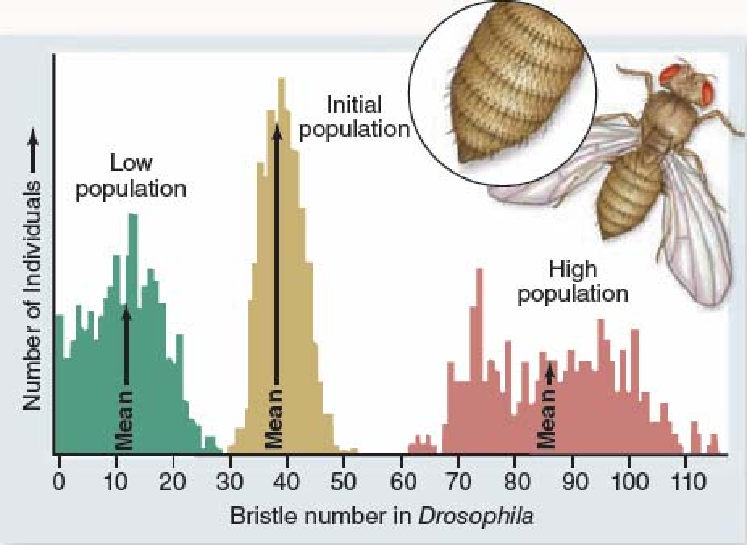The figure below shows results of bristle number in Drosophila flies after 35 generations of artificial selection. This figure suggests that

A. bristle number has evolved beyond the original range of phenotypic variation for this trait.
B. after 35 generations of selection, populations no longer exhibit variation in bristle number.
C. natural selection cannot lead to large phenotypic changes.
D. at the end of the experiment, "high population" flies were unable to interbreed with "low population" flies.
Clarify Question
What is the key concept addressed by the question?
What type of thinking is required?
Gather Content
What do you already know about artificial selection? What other information is related to the question?
Choose Answer
Given what you now know, what information is most likely to produce the correct answer?
Reflect on Process
Did your problem-solving process lead you to the correct answer? If not, where did the process break down or lead you astray? How can you revise your approach to produce a more desirable result?
A. bristle number has evolved beyond the original range of phenotypic variation for this trait.
Clarify Question
What is the key concept addressed by the question?
· The question stem is asking you to look at how artificial selection has caused the bristle number to change from the initial population to the low bristle number population and the high bristle number population.
What type of thinking is required?
· You are being asked to take what you already know and use, or apply, it to the effects of artificial selection on variation within populations.
Gather Content
What do you already know about artificial selection? What other information is related to the question?
· Artificial selection occurs when humans select for a desired trait within a population. Humans have artificially selected for traits in dogs, resulting in different breeds of dogs. Can different breeds of dogs interbreed and produce mixed offspring?
Choose Answer
Given what you now know, what information is most likely to produce the correct answer?
· Artificial selection occurs when humans select for a desired trait within a population. Ultimately, the desired trait may become exaggerated within the population far beyond the levels of variation found within the initial population.
Reflect on Process
Did your problem-solving process lead you to the correct answer? If not, where did the process break down or lead you astray? How can you revise your approach to produce a more desirable result?
· Answering this question correctly depended on your ability to use artificial selection in a new situation¼ If you got an incorrect answer, did you remember that artificial selection is process commonly used by humans to select for desired traits, or that artificial selection affects variation by selecting specific characteristics? Did you have trouble extending your understanding of artificial selection to determine the correct answer?
You might also like to view...
Which of the following serves as the "translator" or intermediary between an mRNA codon and an amino acid?
A. rRNA B. snRNA C. tRNA D. siRNA E. snRNPs
Syndrome means
a. a chromosome disorder. b. a simple genetic disease. c. a set of symptoms that occur together. d. an incurable disease. e. a rare inborn defect.
Chromosomes that have replicated consist of two copies that are still joined to each other. The two copies are referred to as a pair of
What will be an ideal response?
Humans are highly cooperative only because, as suggested by kin selection, cooperation increases the chance of similar genes being passed on through kin.
a. true b. false